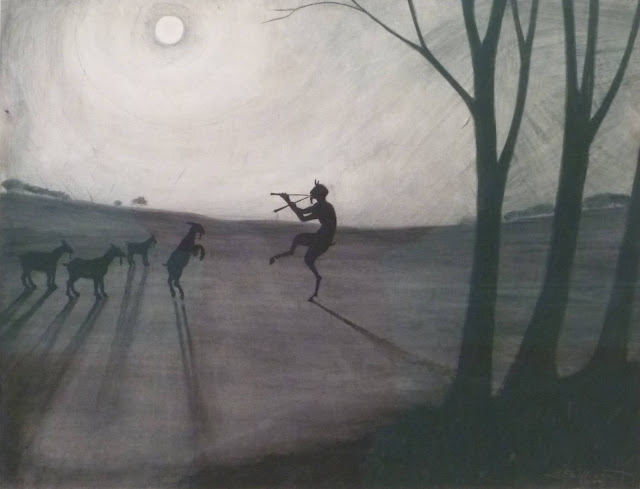Faun by Moonlight by Léon Spilliaert (Interpretation and Analysis)
 |
| Faun by Moonlight Source: Wikimedia Commons |
If you want to create a spooky atmosphere in your home this fall, look no further than the work of Belgian artist Léon Spilliaert. Spilliaert’s art is characterized by dark color schemes, enigmatic subjects, desolate landscapes and lots of drama.
Spilliaert’s uniquely gloomy style emerged from the Symbolist movement. The Symbolists felt that artists should seek a higher truth in their work. Like the Romantics before them, Symbolists turned toward an emotionally rich and psychologically complex visual lexicon. However, while the Romantics often accomplished this through painting the natural world, Symbolists pursued a more abstract approach. As the name suggests, Symbolist artists used a symbolic language to convey an internal world of thoughts and emotions.
Spilliaert achieved this through a dark and dramatic form of introspection, which is on display in paintings like Faun by Moonlight. The piece depicts a faun playing pipes as he leads a herd of goats across a darkened field. The scene is lit by moonlight, and the entire piece is painted in shades of grey and black, a take on the classic grisaille painting technique, which involves creating a scene in grey monotones.
The result is an otherworldly, slightly sinister scene. Traditionally, goats are associated with Satan, while sheep are linked to Christ. Although, fauns are a character associated with Greek mythology. The inclusion of goats might indicate something wicked, but one gets an impression of mischief and magic as the goats frolic through the night.
Disclaimer: I’m not an art historian or an expert on this topic. The above is my opinion, based on my interpretation of my foreknowledge of art and history. If I’ve done any additional research, I’ll note it above.



If you feel it sinister, it is simply because your subconscious goes to the christian iconography that relates goats with the devil. I see a depiction of the mythological greek faun named Marsias. Investigate the mythos about this character
ReplyDelete